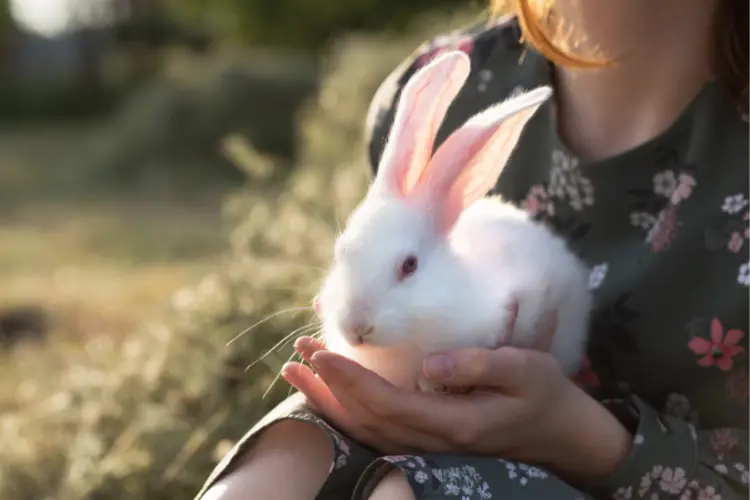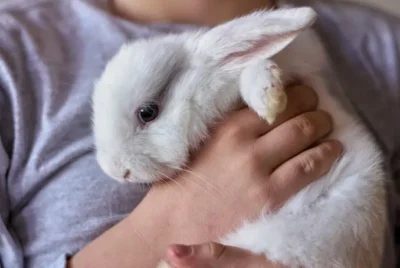Spaying Female Rabbits: A Guide for Rabbit Owners in 2023
As a rabbit owner, you might have heard various opinions about spaying your female rabbit. Through this comprehensive guide on spaying female rabbits, we aim to provide you with accurate and up-to-date information, debunk common misconceptions, and help you make an informed decision about spaying your furry friend.
In the following sections, you will learn about the importance of spaying, the procedure, finding the right veterinarian, pre-and post-operative care, spaying older rabbits, and much more.
Why Spaying Female Rabbits is Important
Spaying female rabbits carries numerous benefits. Not only does it help control the rabbit population, but it also offers health benefits and behavioral improvements.
Failure to spay your rabbit may result in unwanted rabbits, overpopulation, and potential serious health problems.
Preventing Overpopulation
Rabbits are known for their ability to reproduce rapidly. In fact, female rabbits can conceive again almost immediately after giving birth. This can lead to a rapid increase in the rabbit population if left unchecked. Spaying is an effective measure to control the population and prevent overpopulation in both female and male rabbits.
I recommend spaying a female rabbit between 3 to 6 months of age, which can help prevent overpopulation and reduce the chances of unneutered male rabbits spray to mark their territory.
More Health Benefits
Spaying your female rabbit can significantly decrease the risk of reproductive cancers, such as uterine adenocarcinoma and mammary carcinomas/adenocarcinomas. An experienced rabbit veterinarian should be selected for the spaying procedure to guarantee your rabbit’s safety and health.
Spaying can also promote improved overall health, making it a highly recommended procedure by the House Rabbit Society.
Behavioral Improvements
Spayed rabbits generally demonstrate improved behavior, facilitating bonding with other rabbits, including unneutered male rabbits, and diminishing hormone-induced aggression. Unspayed female rabbits may demonstrate aggressive conduct towards other rabbits and their habitat, making it hard to connect. They may also mark their territory by urinating.
Having your rabbit spayed, especially for female rabbits, and neuter rabbits can significantly diminish aggression, including behaviors such as mounting, urine spraying, and territorial aggression.
Read also: How Spaying and Neutering Can Be the Solution to Pet Overpopulation

The Spaying Procedure: What to Expect
For rabbit owners contemplating this surgery for their pets, grasping the spaying procedure is important. The procedure involves anesthesia, surgical techniques, and recovery time, which we will discuss in detail in the following subsections.
Anesthesia and Monitoring
Rabbits require full anesthesia during the spaying procedure. Trained personnel monitor a rabbit’s vitals, including:
- Heart rate
- Respiratory rate
- Blood pressure
- Temperature
This is done to ensure the safety of the pet rabbit, especially when dealing with unaltered rabbits and altered rabbits throughout the procedure.
Adherence to all pre-operative instructions is vital for safety, as veterinarians prefer. It’s also important to inform your veterinarian about any signs of illness or previous medical conditions before the surgery day.
Surgical Techniques
The spaying procedure for female rabbits entails:
- Shaving the fur from the abdomen
- Disinfecting the skin
- Making an incision in the abdominal wall
- Tying off blood vessels
- Extracting the uterus and ovaries
- Closing the incision with sutures
The procedure involves making a small incision in the midline of the abdomen, just below the umbilical area. Choosing a knowledgeable and experienced veterinarian for this procedure is key to minimizing complications and ensuring the best outcome for your rabbit.
Recovery Time
The recovery time for spayed rabbits can vary, but providing proper post-operative care can help ensure a successful and speedy recovery. It is generally observed that a female rabbit takes between 2 to 4 days to resume its normal activities after a surgical procedure.
Following spaying, a rabbit may exhibit fatigue, restlessness, and decreased appetite. Generally, they will quickly recover and return to their usual behavior within a few days.
It is not uncommon for them to hide or be less active for the initial 24 hours post-surgery, and it is advised to allow them to rest and refrain from handling them during this time.

Finding the Right Veterinarian for Your Rabbit
Rabbit-Specific Experience
It is crucial to select a veterinarian with experience in rabbit medicine and spaying procedures. A rabbit-specific veterinarian should possess certifications in Recognized Veterinary Specialties and may also be USDA Accredited.
When seeking experienced rabbit veterinarians, consider the following:
- Their expertise in rabbit health and care
- Their specialization in treating rabbits
- Their demonstrated proficiency in handling and treating rabbits
- Their ability to keep up with the latest advancements in rabbit medicine
Questions to Ask Your Vet
Before choosing a veterinarian, ask them about:
- their experience with rabbits
- the cost of spaying
- their success rate with the procedure
- their certifications, training, and any additional qualifications they may possess.
It is also important to ask about the specific steps and precautions they take during the spaying procedure to ensure the safety and well-being of your rabbit, including safe rabbit surgery techniques.
Pre- and Post-Operative Care for Spayed Rabbits
Proper pre- and post-operative care for your spayed rabbit plays a critical role in a successful procedure and recovery. In this section, we will discuss guidelines for pre- and post-operative care for spayed rabbits.
Pre-Operative Care
Before the spaying procedure, your rabbit should undergo a thorough vet check and discussion of the procedure. No fasting is necessary prior to surgery, and the rabbit should maintain its regular diet in the week leading up to the procedure. This diet should include:
- Hay
- Water
- Pellets
- Fresh leafy greens
These foods will help encourage eating after the procedure.
Post-Operative Care
Post-operative care for rabbits should include:
- Providing pain relief medication prescribed by a veterinarian to alleviate discomfort
- Monitoring the incision for any signs of infection or complications
- Creating a calm and comfortable environment for the rabbit’s recovery
It is imperative to consult with a veterinarian for the appropriate pain relief medication and dosage for the rabbit.
I recommend checking the incision twice daily for one week after spaying, and monitor for infection and administer pain medication as deemed necessary.

Spaying Older Rabbits: Risks and Considerations
Spaying older rabbits carries unique risks and considerations. In this section, we will discuss age-related risks and the importance of pre-surgical screening for older rabbits before spaying.
Age-Related Risks
Older rabbits may have higher risks for surgery, but the benefits often outweigh the risks. Spaying can significantly reduce the chances of ovarian, uterine, and mammary cancers in older rabbits, which are commonly observed in this age group.
However, when spaying rabbits of advanced age, there is a heightened risk of potential complications arising from the anesthetic, infection, and bleeding.
Pre-Surgical Screening
For older rabbits before spaying, pre-surgical blood work and a thorough health check are key to identify any conditions that could potentially elevate the surgery risk. A complete blood count (CBC) and a chemistry panel are usually conducted during pre-surgical screening for rabbits. These tests can help detect conditions such as:
- low platelet count
- arthritis/degenerative joint disease
- otitis media
- dental disease with or without abscesses
- pneumonia
- pododermatitis
- mastitis
- endometritis
- pyometra
- renal disease
- Pasteurellosis
- RHDV (rabbit hemorrhagic disease virus)
Common Misconceptions About Spaying Rabbits
We aim to debunk common misconceptions about spaying rabbits and provide you with accurate information to make informed decisions about your rabbit’s health and well-being.
It is a common misconception that spaying rabbits is more expensive than neutering a neutered male rabbit or that both male and female rabbits can spray urine to mark their territory.
In reality, the cost of spaying can vary, and it is more common for unneutered males to engage in marking behaviors, such as spraying urine.
Another myth is that spaying a rabbit will lead to weight gain or decreased activity level. However, this is inaccurate, as spaying a rabbit will not cause them to increase in weight or become less active.
Spaying Female Rabbits Summary
Throughout this comprehensive guide, we have provided you with essential information on the importance of spaying female rabbits, the procedure, finding the right veterinarian, pre- and post-operative care, spaying older rabbits, and debunking misconceptions.
We hope this guide has been informative and helpful in assisting you in making well-informed decisions about your rabbit’s health and well-being. Remember, spaying not only helps control the rabbit population but also offers numerous health benefits and behavioral improvements for your furry companion.
Frequently Asked Questions
Should female rabbits be spayed?
Given the significantly higher chance of uterine cancer in female rabbits, and the painful and terminal diseases which can be prevented by spaying, it is highly recommended that female rabbits be spayed.
Do female rabbits calm down after being spayed?
Spaying can have a calming effect on female rabbits and make them better companions, as the urge to mate has been removed. They are more predictable in litter box habits, calmer, more loving, and dependable.
How much does it cost to spay a rabbit?
The cost to spay a rabbit can range from $200-$500, plus additional fees for pain medication.
At what age is it recommended to spay a female rabbit?
It is recommended to spay female rabbits between 3 to 6 months of age to prevent overpopulation and reduce the chances of unneutered male rabbits marking their territory.




